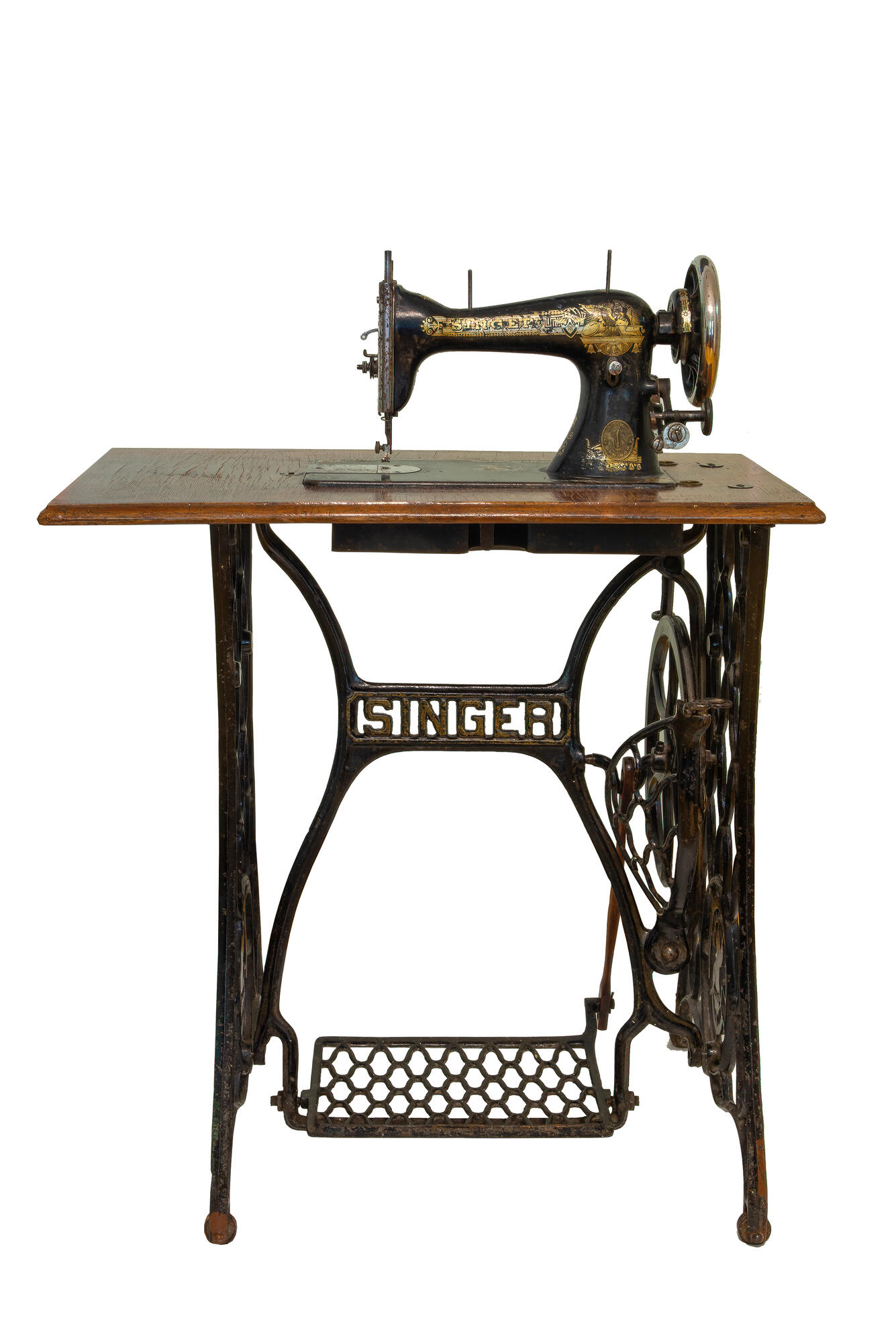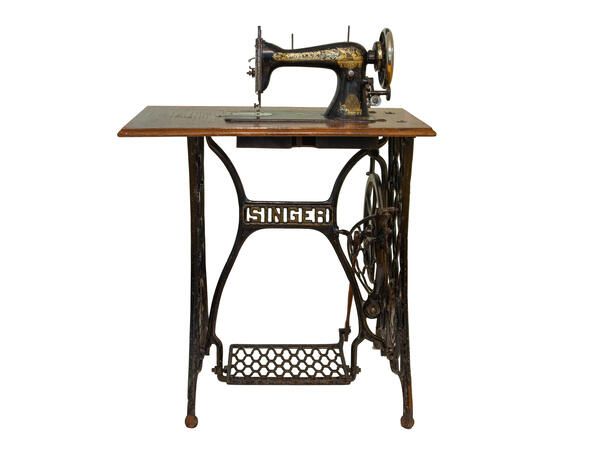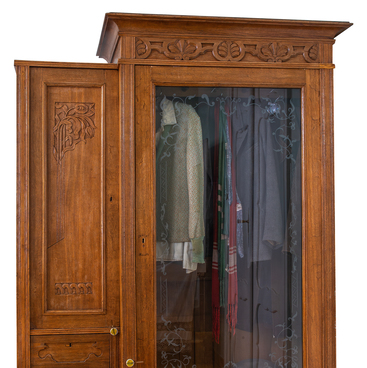The Singer sewing machine belonged to Majit Gafuri’s wife, Zukhra. She was born in 1892 in the village of Kilimovo and received an excellent education and upbringing under the guardianship of Sufiya Tefkeleva-Dzhanturina. The girl’s parents worked for the landowner as tailors. Before the October Revolution Zukhra taught ethics, the Tatar language and literature to the pupils of the gymnasium, which was founded and maintained by another famous art patroness — Maryam Sultanova, and later worked as a teacher in the village of Kargaly.
The sewing machine was produced by the ‘Singer’ company, one of the most famous manufacturers in Russia and abroad. However, attempts to create a sewing machine have been made since ancient times. Back in 1845, an American mechanic Elias Howe managed to design the first machine, which was similar to modern ones and made 300 stitches per minute. Although the patent for the invention was issued in England, America is rightly considered the birthplace of the machine. It was here that Isaac Singer’s first machine in the world was created.
The inventor used the existing design, but made important changes: the shuttle in Singer’s machine was located horizontally, not vertically, as before, so the thread was less tangled. Singer also equipped his machine with a platform table and a presser foot. Later the machine was also equipped with a treadle, thus freeing both hands of a tailor. All these innovations are still in use today.
At the time of its heyday, in the 1860s, the Singer Manufacturing Company appeared on the Russian market. However, by the beginning of the 20th century, it had become unprofitable to deliver goods from overseas — the company got many competitors. Then the company’s management decided to establish a sewing machine factory in Podolsk, near Moscow. The construction of the factory began in 1900. By 1914, the company produced 600 thousand units, and soon the company’s Russian branch built a huge office on Nevsky Prospect in St. Petersburg.
Thanks to the excellent quality of its products, Singer earned the right to be called ‘Supplier of His Imperial Majesty’s Court.’ In 1918, the plant in Podolsk was nationalized by the Bolsheviks and practically stopped producing sewing machines. Manufacturing was resumed only in 1923.
The sewing machine was produced by the ‘Singer’ company, one of the most famous manufacturers in Russia and abroad. However, attempts to create a sewing machine have been made since ancient times. Back in 1845, an American mechanic Elias Howe managed to design the first machine, which was similar to modern ones and made 300 stitches per minute. Although the patent for the invention was issued in England, America is rightly considered the birthplace of the machine. It was here that Isaac Singer’s first machine in the world was created.
The inventor used the existing design, but made important changes: the shuttle in Singer’s machine was located horizontally, not vertically, as before, so the thread was less tangled. Singer also equipped his machine with a platform table and a presser foot. Later the machine was also equipped with a treadle, thus freeing both hands of a tailor. All these innovations are still in use today.
At the time of its heyday, in the 1860s, the Singer Manufacturing Company appeared on the Russian market. However, by the beginning of the 20th century, it had become unprofitable to deliver goods from overseas — the company got many competitors. Then the company’s management decided to establish a sewing machine factory in Podolsk, near Moscow. The construction of the factory began in 1900. By 1914, the company produced 600 thousand units, and soon the company’s Russian branch built a huge office on Nevsky Prospect in St. Petersburg.
Thanks to the excellent quality of its products, Singer earned the right to be called ‘Supplier of His Imperial Majesty’s Court.’ In 1918, the plant in Podolsk was nationalized by the Bolsheviks and practically stopped producing sewing machines. Manufacturing was resumed only in 1923.



